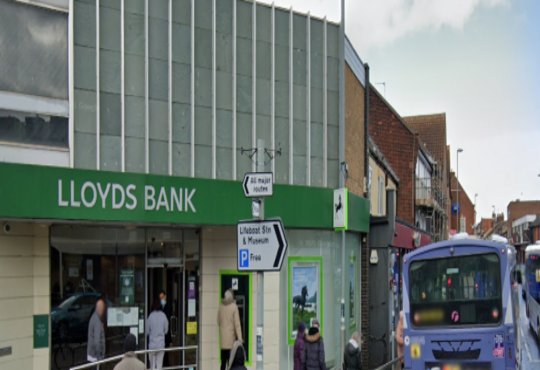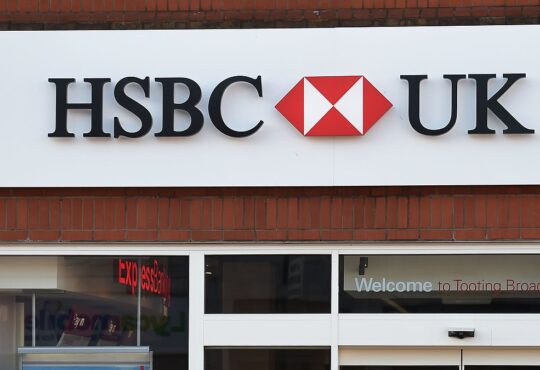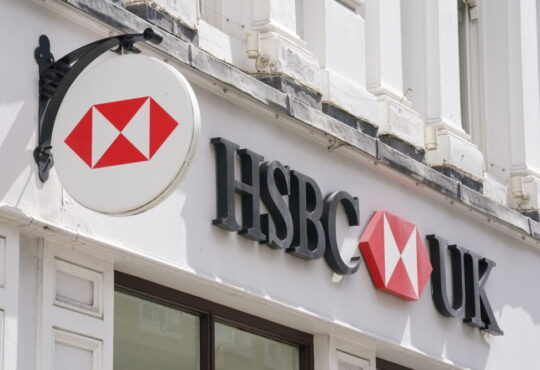
Banks offer a range of perks to win your business. The best current accounts are currently paying more than 4% on positive balances, cashback on purchases, 0% interest on overdrafts or even cash just for signing up. Read on to see who’s currently offering what.
While some providers will pay you to switch to them it doesn’t necessarily mean that deal is the right one for you. This article focuses on the benefits that current accounts give you once you’ve opened them.
Chase*, and Co-op Bank all score highly in our independent ratings. You can earn interest of up to 7% on some or all of your current account balance with some of the accounts below.
In this article we explain:
Read more: Best bank account switching bonuses: Up to £200 on offer
*This article contains affiliate links that can earn us revenue
Our top six current accounts
It offers a range of excellent perks:
– 1% cashback on everyday debit card spending for your first 12 months
– Chase has a competitive linked easy-access savings account, paying interest of 4.1% AER (variable) on deposits up to £500,000
– Chase doesn’t charge fees for using your card or withdrawing cash at home or overseas
– Round-up purchases to the nearest £1 with an account paying 5% AER (variable)
– 1% AER (variable) interest on any balance in your current account
Chase’s cashback offer is very competitive, allowing you to earn it on a wide range of purchases (even when spending abroad). There are exceptions – for example, you won’t earn cashback when you use your debit card to pay for estate agent fees, gambling or cars. You can earn up to £15 cashback per month.
– There is no overdraft facility with Chase
– Maximum cash withdrawal per day: £500
– When abroad, cash withdrawals are limited to £1,500 a month
This trumps some standard easy-access savings accounts, making it a great option for savers. It pays interest on a monthly basis.
As with some of the other accounts on this list, Kroo does not charge you to make payments with your card abroad. It also won’t charge you fees on cash withdrawals abroad until 31 October, a nice bonus.
Kroo charges a fairly standard overdraft rate of 24.9% APR, but whether you will qualify for one depends on your credit history.
– Overdraft interest rate (APR): 24.9%
– Maximum cash withdrawal per day: £300
– 1% cashback on water and energy bills, council tax, mobile phone bills, broadband/tv packages (up to £10/month)
– 1% cashback on supermarket and travel spending (up to £10/month)
– Optional savings account with 7.00% AER* / 6.78% gross (variable) interest on balances up to £4,000
– No fees for using account abroad, including card purchases and withdrawing cash
You will need to pay in £500 each month to qualify for the benefits of this account. If you have a Santander mortgage or high water bills, a Santander 123 current account is likely to be more lucrative, as you’d earn more cashback.
– Overdraft interest rate (APR): 39.94%
– Maximum cash withdrawal per day: £300
– Pay at least £1,250 a month into the account
– Have at least two monthly direct debits set up, each of £4.50 or more (this will earn you £9 in monthly rewards)
– Log into your NatWest mobile banking app at least once a month (this will earn you £1 in monthly rewards)
Don’t want to pay the monthly fee? NatWest also offers a free ‘Premier Select’ account, but you won’t benefit from the cashback options offered by the dearer Premier Reward option.
This is also a decent option if you want fee-free spending on holiday with a major bank, as you won’t be charged for non-sterling card transaction fees abroad. It just won’t apply for cash withdrawals.
In order to qualify, you’ll need to pay in £100,000 sole income or £120,000 joint income into your account. If this isn’t possible then you’ll need to have one of the following:
· Savings or investments of at least £100,000 with the high-street bank
· A mortgage of at least £500,000 with NatWest
– Overdraft interest rate (APR): 39.49% rep APR
– Maximum cash withdrawal per day: £300
– Interest on current account balances up to £5,000 of 3.25% AER (variable)
– No fees for using your card abroad
– Lower than average overdraft rate: 15% – 35% EAR variable subject to credit checking
– No added charges for unarranged overdrafts
– Highly rated app
One potential weakness is that Starling is a digital-only provider. So if you need access to a branch, you’ll have to look elsewhere.
– Overdraft interest rate (APR): 15%-35%
– Maximum cash withdrawal per day: £300
– “Everyday rewards” option means the accounts gives up to £2.20 cashback a month – or generates a charity donation – T&Cs apply
– Has a UK branch network
– Arranged overdraft rates and overseas card charges are a little lower than some of its high street competitors
While it is longer part of the Co-op Group, the bank still has to prove it adheres to strong ethics and values in order to continue using the Co-op brand name.
It does this by turning away businesses that conflict with its ethical policies and working to support those which are ethically strong.
– Overdraft interest rate (APR): 35.9%
– Maximum cash withdrawal per day: the limit starts at £250, but can be extended up to £500
Wondering which is the best current account, or how to choose the best current account for you? We breakdown what you need to know
How do I open a current account?
It’s relatively straight forward to open a current account and should be completed within seven days:
- You can do it online, in local branches and sometimes by phone
- Fill in an application form with your name, date of birth and national insurance number
- Provide proof of address and who you are – for example, your driver’s licence or passport and a recent utility bill
- A letter from a responsible person such as a GP or teacher may be accepted if you are unable to provide other documentation
- A birth certificate may be accepted if you are opening an account for your child or a student account.
The situation is slightly different with online banks because they don’t have physical branches. A photograph of your documentation sent via their app is usually sufficient.
Before you open a current account:
- read the terms and conditions carefully
- check any charges, including monthly fees
- check overdraft rates and any spending limits
If your application is accepted, you will be notified and sent your debit card – which you will need to activate before use – plus your PIN. Find out more about the current account switch service here.
Does a bank have to offer me an account?
No, financial institutions do not have to offer their services to everyone who applies. They are not required to give a reason for the rejection either.
Rejections can be because you have:
- Been involved in fraudulent activities
- Been made bankrupt
- A poor credit score
NOTE: those who fall into the latter two categories may be able to open basic bank accounts instead.
If you feel that you have been discriminated against on grounds of, for example, race, sex or disability, you may be able to complain to the Financial Ombudsman.
If you are looking for ways to boost your credit score, such as getting on the electoral register, check out our article.
Which options pay the most interest?
Several current accounts now pay decent rates of interest on the balance you have in them, or via a linked savings rate:
Watch out for the fees, charges, eligibility criteria and any restrictions. Here’s how to find out which banks pay the best switching bonuses.
The best ‘linked’ regular savings accounts
A regular savings account lets you put away a certain amount of money each month, and receive a higher interest rate than you’d earn with a normal savings account.
For instance, one of the top regular savings accounts pays 7.5% annually, whereas you would only earn 4.5% with the top easy-access account.
However, many regular saver accounts have strict limits on how much you can pay in. This means if you’ve got a lump sum, you might be able to earn more over a year with a top easy-access rate, even if the rate is lower.
The best regular savings accounts require you to have an existing current account with the same bank, paying higher rates than those that are available to everybody.
For example, the top bank account below pays a maximum of £136.50 interest over the course of a year, whereas the top open-to-all account earns just £39.49 during the same period.
For more about regular savings and the accounts that are open to everyone, check out best savings accounts in 2023.
Here are the best linked regular savings accounts:
| Provider | Interest rate | Max monthly contributions | When is interest paid? | Max interest earned after a year |
|---|---|---|---|---|
| Skipton Building Society | 7.5% fixed for 12 months | £250 | End of the 12-month term | £121 |
| First Direct | 7% fixed for 12 months | £300 | End of the 12-month term | £136.50 |
| HSBC | 5% fixed for 12 months | £250 | End of the 12-month term | £81 |
| NatWest and RBS | 6.17% variable on balances up to £5,000 (then 1.41% on balances above £5,000) | £150 | Monthly | £59.83* |
| Santander | 5% fixed for 12 months | £200 | At the end of the 12-month term | £65.01 |
Things to bear in mind when choosing a current account
Bear in mind that some regular saver accounts like First Direct don’t offer penalty-free withdrawals. The others in the list above offer withdrawals but impose limits on what you can take out before facing a penalty, so read the small print.
While First Direct requires you to pay in at least £25 each month, other options let you skip months. This means you can take a break from making regular payments into the regular savings account for as long as you want provided you’re within the term.
It’s worth noting that you earn interest cumulatively with a regular savings account. This means that if it pays 7% and lets you gradually save up to £3,600 over the course of a year, you’re not earning 7% annual interest on the whole £3,600.
This is because you haven’t added the full £3,600 to your savings pot in one go. Instead the pot gradually increases in size (in this case, in £300 monthly increments). This means you only earn interest on the money in your account each month. As your balance increases, so does the interest you earn.
Should I open a linked regular saver account?
If you’re thinking about opening a current account with one of the providers above, it’s worth having a look at their regular savings account.
Alternatively, if you’ve already got a current account with one of these banks, opening a linked regular savings account is a great way to boost your savings interest, even if it’s only on smaller amounts.
However, there are a few things to consider:
- All of the accounts below can be opened online
- There are limitations on how much you can save each month, so if you’ve a lump sum to invest, it’s worth looking at other types of savings accounts
- Some of the rates below are variable, which means they could change — though your bank will let you know in advance
- Most of the top rates only last for 12 months or apply up to a certain amount, after which you may need to look elsewhere to earn decent interest
- Regular savings accounts usually come with terms and conditions to watch out for
Read more: The problem with regular savings accounts
*This article contains affiliate links that can earn us revenue.
All products, brands or properties mentioned in this article are selected by our writers and editors based on first-hand experience or customer feedback, and are of a standard that we believe our readers expect. This article contains links from which we can earn revenue. This revenue helps us to support the content of this website and to continue to invest in our award-winning journalism.
Important information
Some of the products promoted are from our affiliate partners from whom we receive compensation. While we aim to feature some of the best products available, we cannot review every product on the market.






